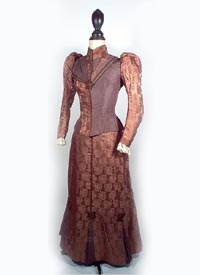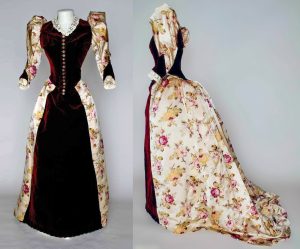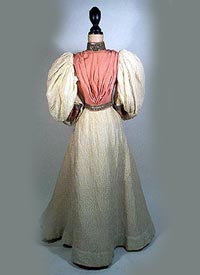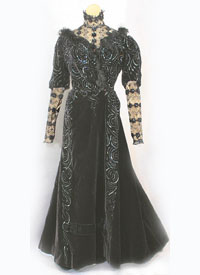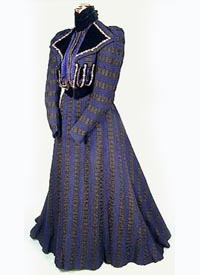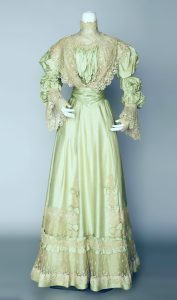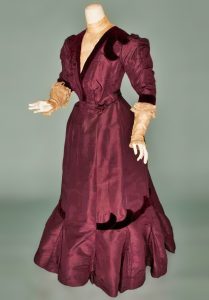The bustle began to fade in 1889, possibly joined by its aging wearers! By 1891, just a tiny pad remained. The gathers at the back of the skirt stayed until 1900. With the decline of the bustle, sleeves began to grow, and the 1830s’ hourglass revival was well underway. Sleeves ballooned to proportions never seen before or indeed since—reaching their fullest in 1895–96. Leg O’ Mutton, Melon, Gigot, and Balloon were a few of the names given to this sleeve. Skirts became flared and gored, even circular. Tiny boned-bodice waists were emphasized with a point in front. Evening dresses often sported elbow-length sleeves.
Silhouettes slimmed and elongated considerably in 1897. Sleeves began to narrow, and skirts were made slim over the hips. Bodices became fuller in front, developing into the pigeon breast or mono-bosom shape of the early 20th century. Necklines rose even higher, supported by very high, boned collars.
Written by The Vintage Fashion Guild
